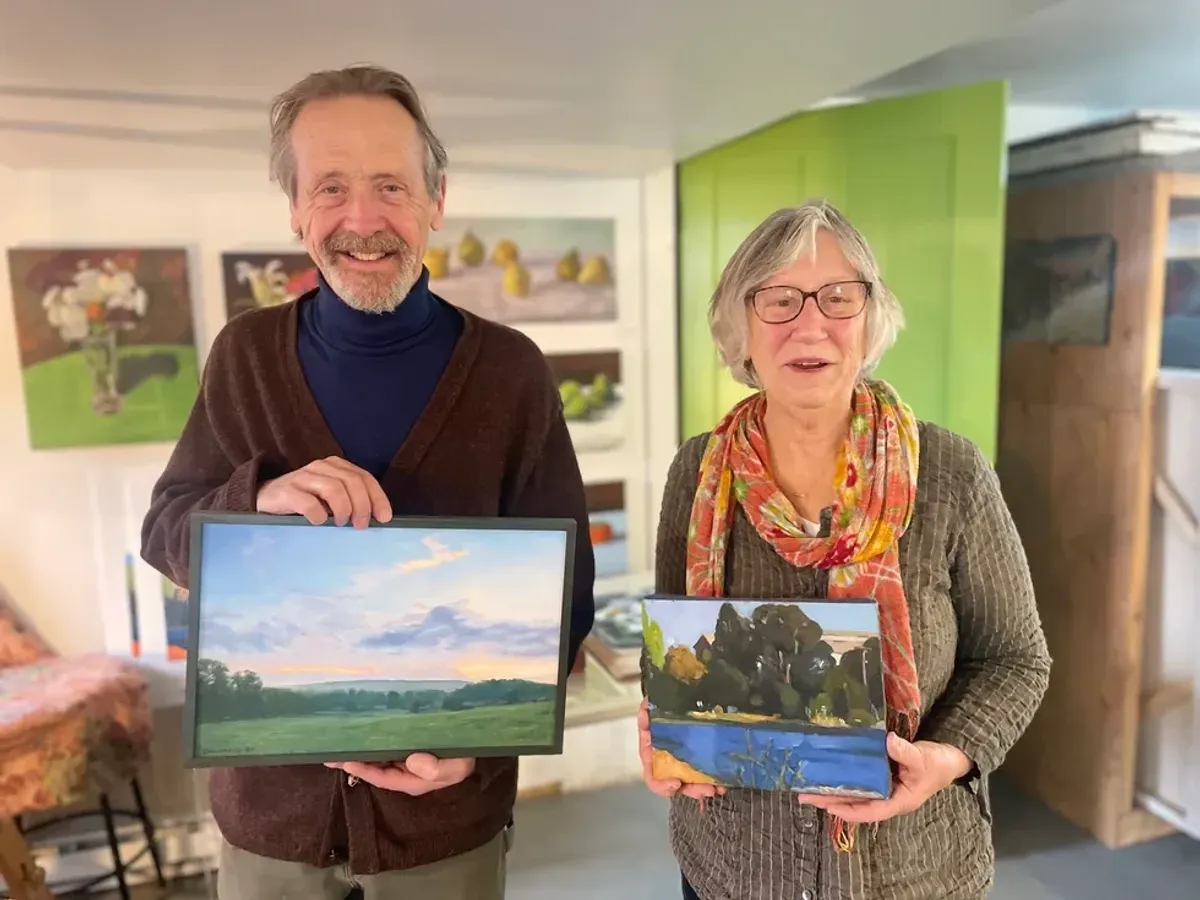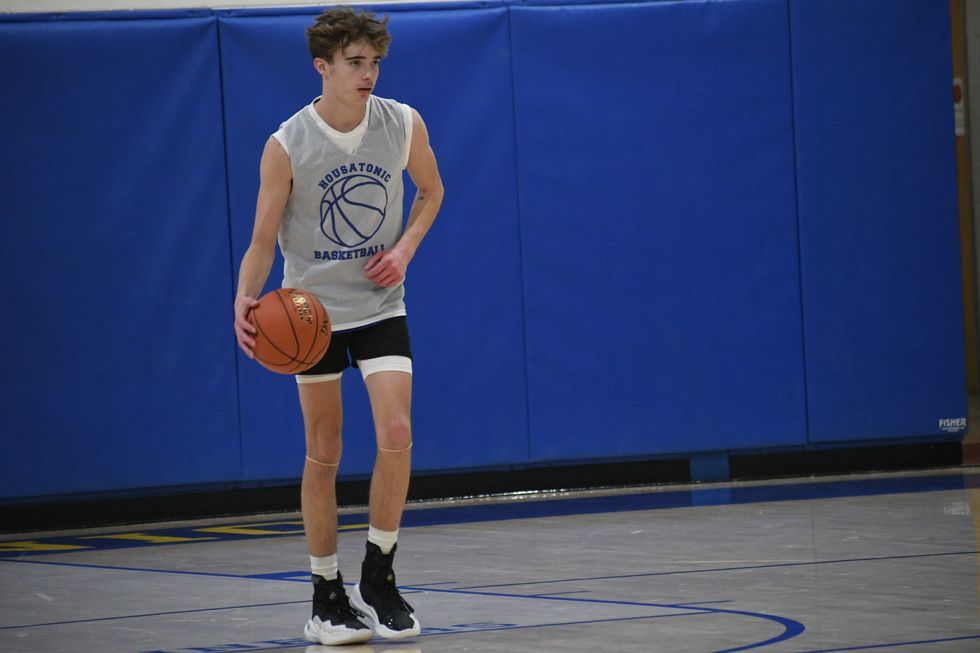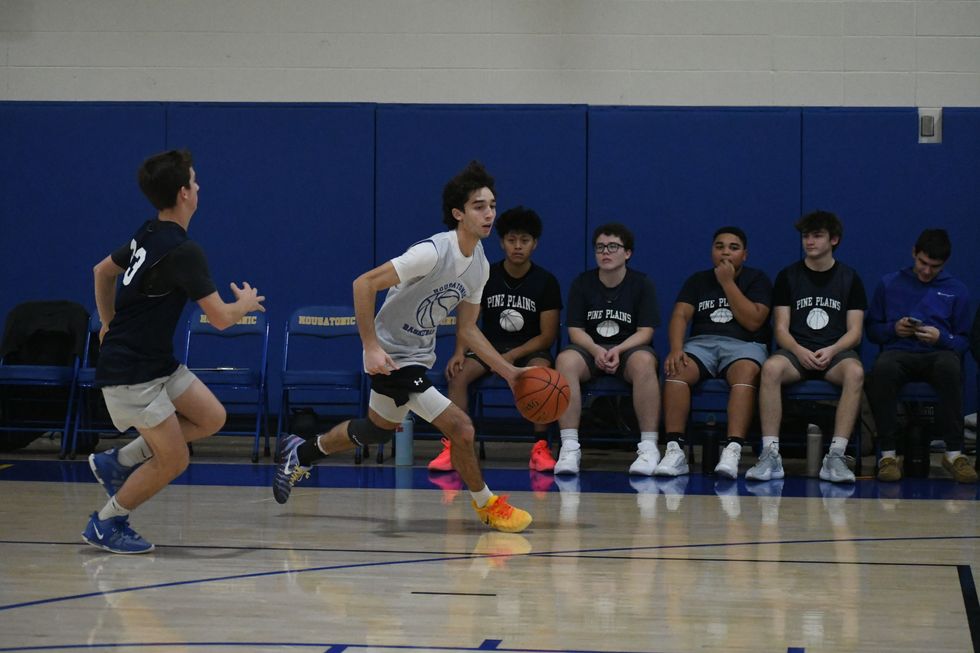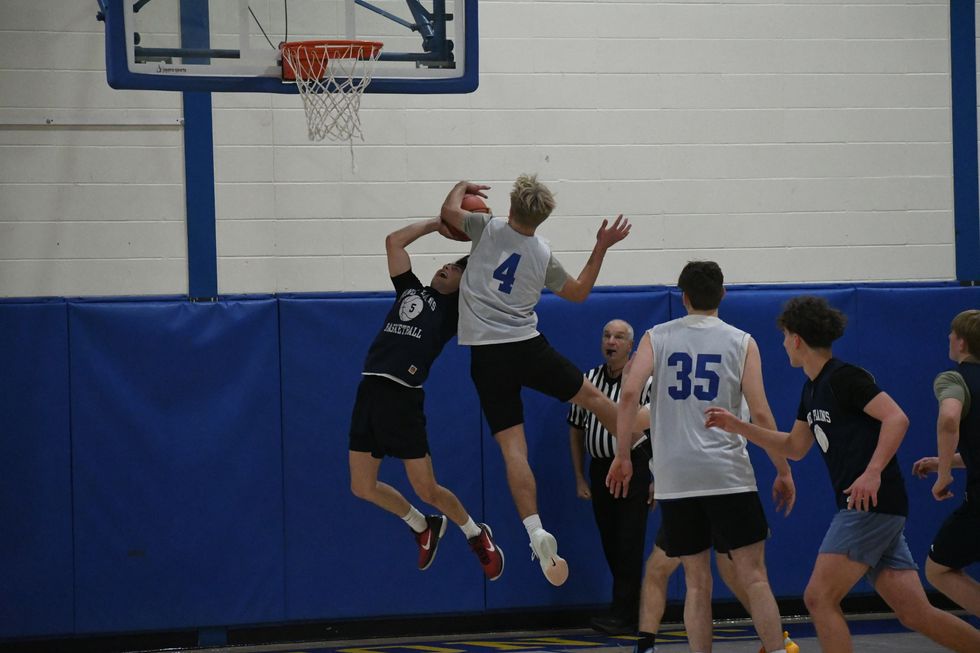Lacke Studio duo show

Scott Culbreth, left, and Suzanne Lacke with samples of their work
Deborah Maier

Scott Culbreth, left, and Suzanne Lacke with samples of their work
Suzanne Lacke (pronounced “lake”) and Scott Culbreth presented landscapes and other paintings on the ground floor of the Music Cellar, the pink building just off Main Street toward Amenia, on Saturday, Dec. 16, and Sunday, Dec. 17.
Lacke, a recent transplant to Salisbury, Connecticut, from California, grew up in Westchester County and completed her art studies on both the East and West coasts. She spoke movingly of teacher Marshall Glasier at the Art Students League, who “…set me on a path of an art practice. He helped liberate us through working large” and imparting the wisdom of his mentor, George Grosz. Over the years, Lacke has returned the favor to her many and varied students.
As in the work of her long-ago mentor, there was a visceral quality to Lacke’s landscapes with their saturated jewel tones and an interplay between modernist flatness and sensuous, almost expressionist brushwork. Many reflect her time as a Californian, while some seem at home in the Litchfield Hills. She foresees more landscapes from this region soon.
Lacke’s “Dresses” series, once exhibited as “Disembodied Robes,” are larger vertical compositions with unusual qualities of liveliness and, at a distance, even photorealistic effects, though they share a painterly quality with her other works.
Her urban scenes have the air of an updated Edward Hopper, with their glimpses into people caught in their reveries while waiting for a green light or crossing a street. Rich, brushy color treatments and close attention to body language and the vagaries of light make for satisfying viewing experiences.
Culbreth was raised in southern Connecticut and moved to Millerton 45 years ago with his artist wife Karen, desiring closeness to family and this area’s natural beauty. The son of two artists himself, he grew up in a home “steeped in the practice of transcribing and producing visual imagery,” the smell of turpentine and the clink of brush ferrules against the mouths of jars.
In his half of the show, Culbreth offered a dozen mid-sized canvases, including landscapes noted for their subtle yet lively colors and poetic realism, as well as some richly textured still life paintings; and some recent abstractions, revisiting an idiom he explored deeply in the past. Widely exhibited in this region over many years, from the Re Institute to museums in Connecticut, Culbreth, like Lacke, shows no sign of abating in the exploration of the creative life.
Lacke Studio is currently a thriving presence in the community, with an ongoing Saturday studio experience/workshop for young artists, figure drawing sessions for adults with various live models, and plans for daylong or weekend workshops on color theory and use starting in January, at 14 Main St. in Millerton. For more information, see suzannelacke.com
The Salisbury Winter Sports Association (SWSA) will host its annual Junior Jump Camp, a two-day introduction to ski jumping, on Saturday and Sunday, Dec. 27 and 28, from 9 a.m. to 2 p.m. at Satre Hill in Salisbury.
The camp is open to children ages 7 and up and focuses on teaching the basics of ski jumping, with an emphasis on safety, balance and control, using SWSA’s smallest hill. No prior experience is required.
The cost is $50 per child and includes instruction and lunch on both days. For more information or to register, visit www.skireg.com/swsa-camp or email info@jumpfest.org
Jesse Bunce, first selectman of North Canaan.
LITCHFIELD — The Northwest Hills Council of Governments welcomed six newly elected municipal leaders Thursday, Dec. 11, at its first meeting following the 2025 municipal elections.
The council — a regional planning body representing 21 towns in northwest Connecticut — coordinates transportation, emergency planning, housing, economic development and other shared municipal services.
Barkhamsted First Selectman Meaghan Cook, Goshen First Selectman Seth Breakell, Kent First Selectman Eric Epstein, Norfolk First Selectman Henry Tirrell, North Canaan First Selectman Jesse Bunce and Torrington Mayor Molly Spino were each elected to their post in November.
They filled the seats of their predecessors on the COG, who were each given a toast of appreciation: Nick Lukiwsky (Barkhamsted), Todd Carusillo (Goshen), Marty Lindenmeyer (Kent), Matt Riiska (Norfolk), Brian Ohler (North Canaan) and Elinor Carbone (Torrington).
COG Executive Director Rob Phillips said the outgoing members were given a going away mug that read “You’re living the dream still.” Members voted to appoint Warren First Selectman Greg LaCava to fill a vacancy on the Council’s Executive Committee. COG members voted by paper ballot, and LaCava defeated Burlington First Selectman Doug Thompson for the vacant seat.
Ryan Segalla takes a fadeaway shot over a defender.
FALLS VILLAGE — Housatonic Valley Regional High School’s boys basketball team defeated Pine Plains High School 60-22 in a scrimmage Tuesday, Dec. 9. The non-league preseason game gave both sides an opportunity to run the court ahead of the 2025-26 varsity season.
HVRHS’s senior-heavy roster played with power and poise. The boys pulled ahead early and kept their foot on the gas through to the end.
By halftime the score was 33-8. Junior varsity players subbed in for the second half, but not before the starters got some in-game dunk practice. By the end Housatonic totaled 60 points to Pine Plains’ 22.

Nick Crodelle led the Mountaineers offensively with 13 points. Anthony Labbadia and Wyatt Bayer scored nine points each. Anthony Foley scored eight points. Owen Riemer and Ryan Segalla each scored seven points. Peyton Bushnell hit a three-pointer. Jaxon Visockis and Henry Berry each scored two points.
HVRHS begins Berkshire League competition on the road at Nonnewaug High School Tuesday, Dec. 16, with a 6 p.m. tip off.


Katie Moore delivers toys to the Stuff a Truck campaign held by the Kent Volunteer Fire Department last weekend. Donated toys are collected so that parents, who need some assistance, may provide their children with gifts this Christmas. Accepting the donation are elves Fran Goodsell and Karen Iannucci
KENT — Santa’s elves were toasty warm as they collected toys for the children of Kent.
Keeping with annual tradition, Fran Goodsell and Karen Iannucci manned the Stuff a Truck campaign sponsored by the Kent Volunteer Fire Department on Saturday, Dec. 6, and Sunday, Dec. 7. Sitting in front of a fire pit in the firehouse parking lot between donations from residents, they spoke of the incredible generosity displayed every season. That spirit of giving was clear from the piles of toys heaped on a table.
“This is always so gratifying,” said Goodsell, noting that certain businesses, including High Watch Recovery Center, Wilson’s, and Kent and South Kent schools needed a “shout out” for all they’ve done. She said South Kent School focuses on gifts for older children, which is a group that often is overlooked.
Unwrapped contributions are sought for children 1 to 15 years old who might otherwise find little or nothing from Santa, they said. The bounty will be set up at the Community House on Thursday, allowing parents to come and take what they want. If there are still items left, grandparents are invited to “shop.”
The atmosphere was festive Saturday, as a stuffed dog began barking a Christmas tune whenever someone walked in front of it. A large decked-out bear posted at the parking lot entrance reminded passersby of the event. Visiting children were able to get a close-up look at the fire truck and walk through the firehouse if they wished.
Goodsell and Iannucci were very grateful to those who donated wood for the fire pit. “And so many asked if they could bring us coffee or hot chocolate,” said Iannucci.
Goodsell said many who came talked about having grown children who were recipients of the gifts when their families were struggling. “They are so glad to be able to give back,” she said.